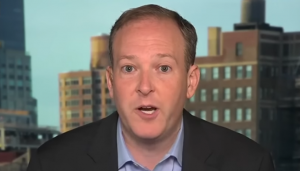India’s economy grew by 13.5% in the April-June quarter this financial year. The GDP growth is seen at 6.3% in Q2 FY23 and 4.6% in Q3 FY23 and 4.6% in Q4 FY23. India remained the fastest growing major economy, while China had 0.4% GDP growth in the April-June 2022 quarter.
Also Read| How US Fed rate hike impacts the Indian rupee
Global interest rates are being hiked, adding to the plethora of variables indicating that another rate hike is likely in the coming months.
Also Read| Bitcoin logo: Who designed it, know its history
However, rising interest rates would increase the government’s interest cost as it spends to sustain economic recovery. This bolsters the case for Operation Twist, which involves hiking short-term interest rates to combat inflation while reducing long-term interest rates to promote growth.
Also Read| How stock markets have evolved since 1860s
Since the beginning of 2020, central banks throughout the world have had to adapt to an extraordinary pace and the process is expected to continue for some time. In India, monetary policy decisions are now made every two months as a sort of routine. Monetary policy has an impact on stock markets because it effectively controls interest rates and liquidity in the financial system.
Also Read| Why interest rates are being hiked globally?
This is a rather complicated argument, but it provides valuable insight into the link between monetary policy and stock market trading. The cost of capital is divided into two parts: the cost of debt and the cost of equity. When interest rates fall, the cost of debt falls along with it, lowering the cost of equity. That is, future cash flows are now evaluated using a lower interest rate. Because the stock worth represents the present value of future cash flows, this increases the stock’s value. When the central bank indicates higher interest rates, however, stock prices tend to fall.
Also Read| Why RBI would be pushed to hike interest rates
There are several sectors that are particularly sensitive to fluctuations in interest rates in the economy. Lower interest rates often help sectors such as banks, NBFCs, automobile manufacturers, and real estate companies. The entire weightage of banks, financials, and auto firms in the overall Nifty is approximately 50%. With roughly half of the index companies being completely interest rate sensitive, interest rate swings are likely to have an impact on the market as a whole.
Also Read| How India can fight ransomware attacks
Corporate earnings are still under strain, as sluggish demand makes it harder for manufacturers to carry the entire cost of increased inputs. As geopolitical tensions between Russia and Ukraine persist and Covid cases in China continue, the view for input prices remains gloomy. Rising interest rates are projected to exacerbate the problem by increasing financing costs on the supply side while disincentivizing consumption on the demand side.
Also Read| Explained: Difference between RBI’s accommodative, neutral & hawkish stance
Export-driven sectors with high exposure to the United States and Europe may suffer if these nations boost interest rates while struggling with sluggish growth and record inflation.
Also Read| Explained: Changes in repo rates and their impact on stock market
As countries recover from the pandemic, there is the optimism of a resurgence in demand coupled with the normalisation of contact-intensive sectors. Subsidies and tariff cuts from the government are intended to ease the effect of inflation while increasing rural demand.
Also Read| Explained: How the crypto landscape has changed in India
The government’s policies, such as its PLI initiatives, are anticipated to stimulate private capital spending, which will have a multiplier effect on economic recovery. While China’s sluggish consumption is a barrier to demand, the China plus one strategy provides an opportunity for sectors such as chemicals, commodities, pharmaceuticals, and textiles.






